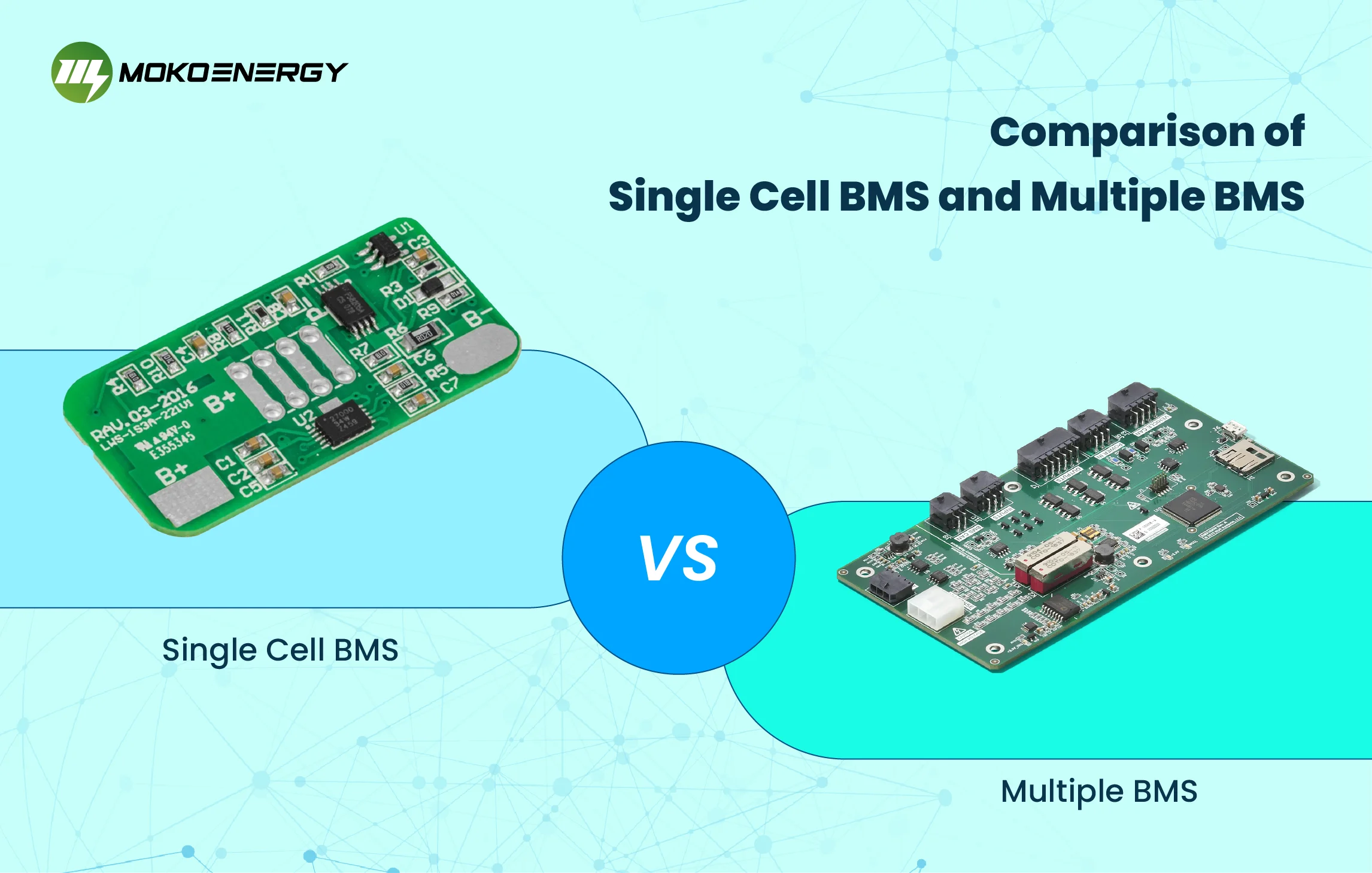Industries, across the globe are undergoing transformations to build a friendly future and the battery sector is no exception. With an aim to promote sustainability and eco-friendliness, the European Union (EU) has introduced a new battery regulation. This new EU battery directive is set to have an impact on how batteries are manufactured, utilized and managed throughout their entire lifecycle. Now, let’s dig into the details of the new EU Battery Regulation 2023 and understand how it will affect battery makers, the battery industry, and the world at large.
What is the New EU Battery Regulation?
The new battery directive brings about changes in how batteries are regulated within the European Union. It is used to promote eco-friendliness and sustainability. Unlike the European Directive 2006/66/EC, which primarily focused on battery disposal this new rule encompasses the lifecycle of batteries – from production to usage, disposal and recycling.
Why was this regulation put into place?
Due to the fast progress of battery technology and its impact on the environment, the necessity for a new battery regulation has become clear. While Directive 2006/66/EC served its purpose at the time, it failed to address the complexities associated with modern batteries, particularly those used in electric vehicles (EVs) and portable electronic devices.
Due to increased battery demand, concerns about harmful substances, ethical sourcing of materials, and the carbon footprint of battery production, the European Union established a more comprehensive and targeted new regulatory framework.
EUROPEAN Directive 2006/66/EC: The Catalyst for Change
Battery regulation in the European Union has been guided by EU Battery Directive 2006 66 EC for many years. It requires member States to develop measures to promote the separate collection and proper disposal of batteries and accumulators. However, advanced battery technologies such as lithium-ion batteries are used in limitations. These limitations centered around the directive’s universal ideology which ignored the individual needs of different battery types and applications.
What are the Key Implementation in the New European Battery Regulation
The European Battery Regulation 2023 opens the path for a radical change in how batteries are regulated and sustained in the EU. This ambitious architecture features a well-considered implementation timeline that guarantees a smooth and successful transition to greener and more traceable batteries. The detailed breakdown of important clauses and the associated implementation dates is provided below, illuminating the complex facts and information that underlie these revisions.

- New Classification of Batteries
Effective Date: August 17, 2023
Four unique battery classifications are now recognized by the new classification: portable, industrial, electric vehicle (EV), and light mobility transport (LMT). By recognizing the various uses and features of batteries, this classification enables category-specific regulatory actions. To ensure safety, effectiveness, and environmental responsibility, for instance, EV batteries must receive special regulatory attention. EV batteries are a key component of the shift to green mobility.
- Restrictions on Hazardous Substances
Effective Date: August 17, 2023
Annex I of this regulation provides a comprehensive list of restricted hazardous substances, including cadmium, mercury, and lead. Concerns about the effects of dangerous substances on the environment and human health are addressed by these limitations. This list’s dynamic nature demonstrates how committed the regulation is to keeping up with new scientific findings and security threats, allowing for fast revisions and increased safety precautions.
- Carbon Footprint of Certain Batteries
Effective Date: May 1, 2024
Electric vehicle batteries, as a crucial component of the sustainable mobility ecosystem, must provide detailed carbon footprint declarations. Manufacturers must calculate the carbon footprint in kilograms of CO2 equivalent per 1kWh of energy produced over the battery’s expected service life. Underscoring the comprehensive approach of this law, which takes into account emissions from raw material extraction through end-of-life considerations, is the differentiation of the carbon footprint during several lifespan stages.
- Performance and Durability Requirements for Certain Batteries
Effective Date: May 1, 2024
General portable batteries, rechargeable industrial batteries, and LMT batteries must abide by strict requirements for electrochemical performance and endurance. By ensuring batteries match these criteria, their lifespan and general performance are increased. In order to support the shift to sustainable transportation, batteries for electric vehicles must meet extra requirements that increase battery performance, dependability, and durability.
- Removability and Replaceability of Batteries in Products
Effective Date: February 18, 2027
Starting on this date, manufacturers must design products in a way that facilitates the removal and replacement of batteries by end-users. This criterion places a strong emphasis on user-friendliness and repairability, combating the disposable culture and extending product lifespans. Additionally, manufacturers are required to give qualified repair staff the necessary information on repair and replacement procedures, promoting a culture of maintenance rather than disposal.
- Labeling and Information Requirements
Effective Date: February 18, 2026 and February 18, 2027
By February 18, 2026, battery labels must display essential information about the battery’s composition and specific performance characteristics.
By February 18, 2027, a QR code must be present on battery labels, providing consumers easy access to comprehensive information about the battery’s carbon footprint, manufacturer details, and more.
These label requirements enable consumers to make informed decisions based on the environmental impact and usage parameters of batteries.
- Battery Due Diligence Policies
Effective Date: May 1, 2025
Economic actors must put due diligence processes in place to evaluate and mitigate social and environmental hazards in the sourcing and processing of raw materials. These regulations guarantee ethical behavior across the supply chain in accordance with agreements and standards made on an international scale. Due diligence policies help create a more sustainable and socially conscious battery sector by encouraging ethical sourcing and responsible operations.
- Batteries Waste Management
Effective Date: May 1, 2025
Batteries will be required to carry the crossed-out waste bin symbol from May 1, 2025, indicating separate collection as WEEE. Manufacturers will also need to meet recycling efficiency targets and use a minimum percentage of minerals from recycling in battery production. By encouraging correct disposal, lowering dependency on primary raw materials, and minimizing waste formation, these approaches support the circular economy concept.
- Battery Passport
Effective Date: May 1, 2026
Batteries above 2kWh placed on the market must be electronically registered through a Battery Passport. By encouraging dialogue between producers, consumers, and recyclers, this digital document improves transparency. By giving customers access to precise data about battery manufacture, carbon footprint, and health status, the EU battery passport raises user awareness and encourages sustainable battery management.
Where Is the New EU Battery Regulation in Force?
The European Union has suggested a ground-breaking idea called the New EU Battery Regulation. It is applicable to all EU members, establishing a comprehensive and consistent new EU regulatory framework for battery management across the entire area. By creating a level playing field for battery operators and manufacturers, this collaborative strategy promotes regulatory uniformity and encourages healthy competition.
Who Will Need to Comply with the New EU Battery Regulation?
With the establishment of this rule, a wide network of varied battery value chain stakeholders would be involved. Its requirements must be followed by all manufacturers, producers, importers, distributors, and end users of various types of batteries. This comprehensive breadth highlights the EU’s dedication to fostering comprehensive reform within the battery industry.

What Does New EU Battery Regulation Mean for Battery and BMS Manufacturers?
Amidst the seismic shifts orchestrated by the New EU Battery Regulation, the role of Battery Management Systems (BMS) and battery manufacturers takes on unprecedented significance. BMS, the orchestrators of battery performance, find themselves at the forefront of data accessibility and traceability. The Battery Management System, as a guardian of health-related information, plays a crucial role in ensuring compliance by providing accessible battery health data to buyers and third parties. For Battery manufacturers and Battery protection board manufacturers, this requirement signifies a paradigm shift that goes beyond mere compliance, embracing the holistic spirit of sustainable development. Ethical sourcing, carbon footprint reduction, and recyclability are elevated as guiding principles. As manufacturers shift towards designing for extended battery lifespans, promoting recycling, and minimizing environmental impact, the principles of circular economy are being supported.
How is MOKOEnergy Responding to the Changing Landscape?
Participants in the industry are rethinking their tactics as a result of these revolutionary regulatory developments. MOKOEnergy, a forward-thinking player in the battery sector, is taking proactive steps to align with the New EU Battery Regulation. Committed to sustainability and environmental responsibility, MOKOEnergy is focusing on various areas:
- Sustainable Design and Production:
MOKOEnergy is pioneering sustainable design and production practices for its battery protection board and batteries. The company is dedicated to using renewable resources for its materials and reducing pollution throughout the manufacturing process. This strategy adheres to the fundamentals of the circular economy while also minimizing the environmental impact of battery production.
- End-of-Life Considerations:
Recognizing the importance of responsible end-of-life management, MOKOEnergy is ensuring that its battery protection boards and batteries are designed for easy dismantling and recycling. Through collaboration with trustworthy organizations, MOKOEnergy ensures that its products are properly handled and recycled in accordance with regulatory requirements.
- Carbon Footprint Calculation:
MOKOEnergy is actively engaged in calculating the Life Cycle Assessment (LCA) of its products relevant to the battery pack industry chain. This evaluation presents a thorough analysis of the environmental impact over the course of your battery’s life. The business’s commitment to environmental accountability is demonstrated by its open reporting of carbon footprint values.
- Supplier Qualification:
As part of its proactive approach, MOKOEnergy is implementing a stringent supplier qualification system. While ensuring peak performance, this system gives materials from vendors with smaller environmental footprints priority. This plan pushes suppliers to embrace sustainable practices while also establishing MOKOEnergy as a responsible member of the battery pack industry chains.
- Innovation and Responsiveness:
MOKOEnergy is continuously innovating to meet the evolving requirements of the New EU Battery Regulation. The business makes sure its items meet the most recent requirements by retaining a leadership position. This proactive approach demonstrates MOKOEnergy’s commitment to leading the battery market and bringing about positive change.
Conclusion
The new EU Battery Regulation is a big change for how batteries are handled in Europe. It cares a lot about the environment, shows the carbon footprint clearly, and pushes for eco-friendly ways. This rule sets an example for taking care of batteries everywhere. As a company that always keeps up with the new trends, we ensure that we can lead the BMS board manufacturing industry to a greener future. Contact us now if you’re sourcing for any battery management solution!






